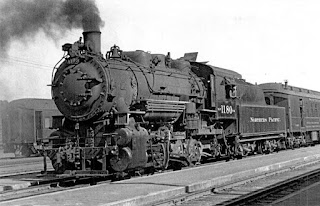Times were tough in the summer of 1935. Tough everywhere and even more so in Pasco, Washington. For Pasco was a railroad town and the Great Depression hit railroad companies especially hard, with many of them going under. Those hard times were probably at least partly to blame for a tragedy early on the morning of August 6th.
A couple hours before sunrise, two patients arrived at Our Lady of Lourdes Hospital. There was a connection between the men’s injuries, but no one knew quite what it was. Isaac I. “Ike” Turya had been shot in the abdomen and was near death. As quickly as possible, surgeons worked to repair the damage, hoping to preserve his life. The other patient, Earl B. Mooney, did not have life-threatening wounds. Still, he had been badly beaten, with severe contusions around the eyes.
Originally from Minnesota, Turya had briefly served in the Army during World War I. He, his wife, and a son arrived in Pasco around 1919. A Kentuckian, Mooney and his wife moved to Pasco some time before 1920. When the 1920 census was recorded, both men worked for the Northern Pacific Railroad. Turya, then aged 22, was a brakeman, while Mooney, age 38, was a rail yard switchman.
 |
| Northern Pacific Steam Locomotive. Northern Pacific Railway Historical Association. |
Although badly wounded, Turya lived about five days and gave a strange account at first. Around 2 o’clock in the morning, Turya said, he had walked home after a night on the town. At his doorstep, a masked gunman robbed him and then forced him to walk toward the edge of town. Fearful for his life, he had turned suddenly and punched the follower. That dislodged the mask, revealing the thief to be Mooney. But, even as Turya struck, Mooney shot him. Despite his wound, the much younger Turya proceeded to beat Mooney senseless. He then stumbled toward his home, but did not quite make it. He came to in the hospital.
Mooney told a different story. He too had been out late and happened to run into Turya near the latter’s home. They began a conversation while walking along the street away from Turya’s place. Then, Mooney said, some remark of his caused Turya to turn and slug him. When Mooney began to get the worst of the ensuing fight, he pulled out a revolver and tried to beat Turya with it. They scuffled over the weapon, which went off and wounded Turya. Even so, Turya knocked Mooney down and out. When Mooney came to, he staggered back to Turya’s place, found him outside on the ground, and called an ambulance.
These conflicting accounts had everybody puzzled. One of the first newspaper articles said, “Trouble is said to have been over liquor.” But then the story changed to one where the two argued “over private matters, which both men refused to disclose.” Finally, during the trial, Mooney asserted that Turya had made an offensive remark about Mooney’s estranged wife. The ensuing fight ended with Turya shot “accidentally,” and Mooney unconscious on the ground.
None of the accounts mentioned how the revolver ended up in an alley near Turya’s home. Turya may have grabbed the weapon to keep Mooney from using it again, then tossed it as he neared home. Or Mooney still had it when he came to and followed Turya, but slung it into the alley at the last. In any case, the sheriff found it there during his investigation. At the trial, criminologist Luke S. May testified that a bullet from that weapon had killed Turya.
Authorities prosecuted Mooney for both robbery and first degree murder. The jury labored over the verdict for many hours, trying to sort out what happened. It appears they quickly discounted the supposed robbery, finding little to support that story. However, the inarguable fact remained that Mooney had shot and killed a man during what started as a fist fight. The jury finally said “not guilty” on the robbery charge and reduced the other to a second degree murder conviction.
Mooney was sentenced to 30 years in prison, and his appeal was denied. However, he served a much reduced time, being back in Pasco to register for the World War II draft in the summer of 1943.
| References: Susan Davis Faulkner, Images of America: Early Pasco, © Susan Davis Faulkner, Arcadia Publishing, Charleston, South Carolina (2009). |
| Luke S. May, Luke S. May Papers, Special Collections, University of Washington, Seattle, Washington (1969). |
| State v. Mooney, 185 Wash. 681, 56 P.2d 722 (1936). |
| “[Turya Shot by Mooney, Mooney Charged],” The Oregonian, Portland (August 12-17, 1935). |
| “[Trial and Conviction of Mooney for Turya Murder],” Olympian, Olympia; Seattle Times, Washington (November 13-18). |
No comments:
Post a Comment